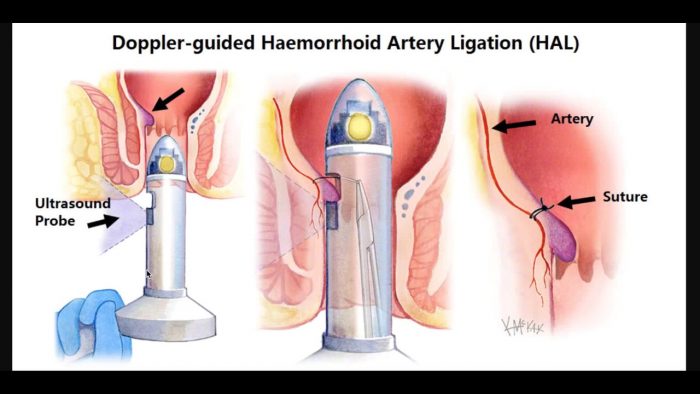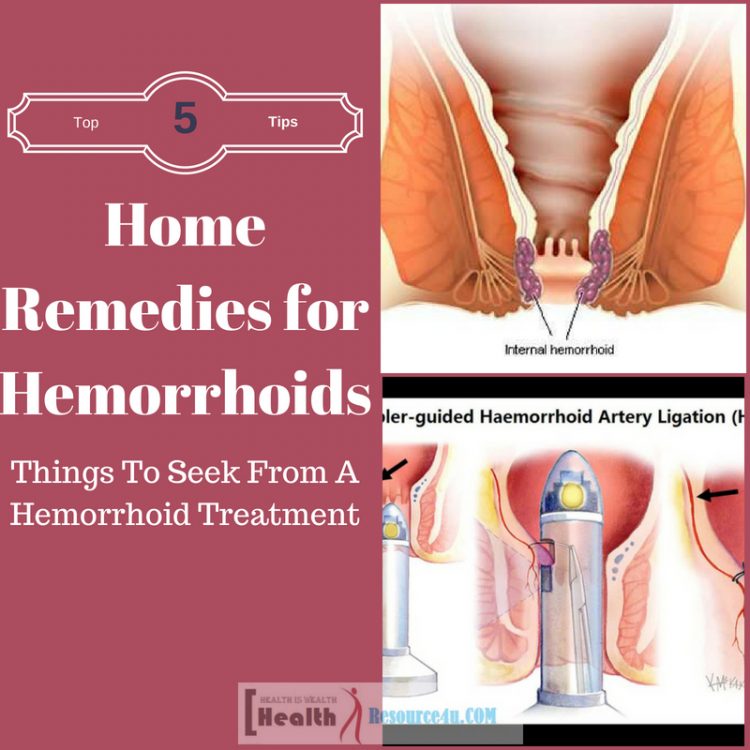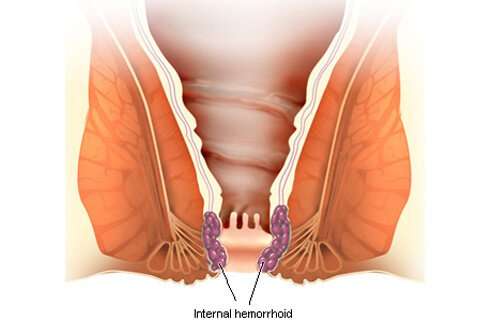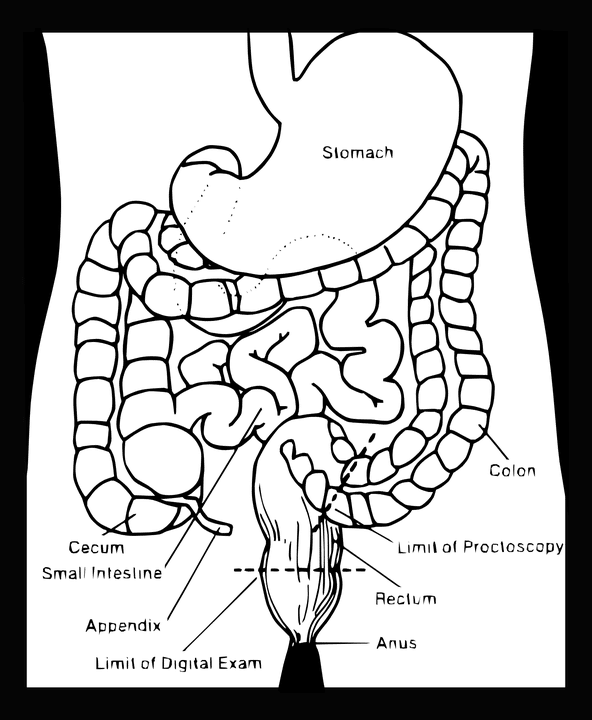Rectal bleeding is never normal and although hemorrhoids are the common reason for blood in the stool, your medical health care practitioner should definitely be consulted to confirm the diagnosis before treatment. Other rectum bleeding causes can be serious such as inflammatory bowel disease and colon cancer. Medical treatment is necessary if a person is taking anticoagulants medications such as:
- warfarin/Coumadin,
- rivaroxaban/Xarelto,
- prasugrel/Effient,
- enoxaparin/Lovenox.
- dabigatran/Pradaxa,
- clopidogrel/Plavix
- apixaban/Eliquis,
Individuals with symptoms such as lightheadedness and weakness can be experiencing considerable blood loss and may require critical care. Hemorrhoids do not generally cause abdominal pain; if the pain is present with bleeding, medical care needs to be immediately sought. Medical care is also required for prolapsed hemorrhoids that cannot be pushed back. Thrombosed external hemorrhoids can lead to considerable pain and medical care may be needed for clot removal.
Hemorrhoids are a commonly occurring medical condition and are treated by primary health care providers like doctors or surgeons, ER personnel or internists. Surgeons need to operate to remove enlarged or inflamed hemorrhoids. Hemorrhoids are diagnosed through history and physical exams by a healthcare professional. The anus is examined along with a digital rectal examination. Based on the situation, the past history of the medical condition, drugs are taken, and the patient’s stability, treatment may be followed with no additional testing.
Internal hemorrhoids don’t even have to be diagnosed through a physical examination; they may not be felt even by a digital rectal exam. Prolapsed external and internal hemorrhoids may be detected using a physical examination. A thrombosed external hemorrhoid can be diagnosed by physical inspection alone.
In case considerable bleeding has occurred, a complete blood count/CBC to measure blood hemoglobin and hematocrit levels. Platelet counts are also obtained. If a patient is on warfarin/Coumadin, a prothrombin time or INR must be undertaken to measure the levels of blood clotting.
How to Seek Treatment
Table of Contents
Lifestyle/ home-based remedies for treating hemorrhoids include warm Sitz-based baths, high fiber diets, and stool softeners; additionally, exercise is a very good remedy for hemorrhoids.
Over the counter or prescription, medication or surgical intervention may be needed for repairing the hemorrhoids. This can range across rubber band ligation, laser therapy, sclerotherapy, hemorrhoidectomy and staple version of this as well.
Hemorrhoid symptoms such as itching and pain can be managed by carrying out the following:
#1 Warm Sitz-Type Baths
Sitting in just a couple of inches of hot water thrice in a single day for just 15-20 minutes can decrease the hemhorroids inflammation. Drying off the area post the bath minimizes the anal skin irritation.
#2 Dietary Changes
Increasing intake of fluids and dietary fiber or roughage can lower the chance of GI problems and lessen pressure or stresss on the rectal and anal region at the time of bowel movements. This minimizes swelling. Besides lowering inflammation, it also counters bleeding and discomfort. Dietary fibers can also help to make stools softer.
#3 Exercising
Those with hemorrhoids can either sit on special pillows or avoid sitting at all. Air pillows are available at local pharmacy stores. Exercise also relieves constipation and results in decreased pressure and stress on the hemorrhoidal vein. Individuals should target quick evacuation in the washroom to avoid problems.
#4 OTC/Over the Counter Medications
A lot of ointments, creams, lotions as well as suppositories are there for offering relief from symptoms. However, these do not cure hemorrhoids. Often, numbing medication or corticosteroid can decrease the swelling and inflammation.
Prolapsed Hemorrhoids Treatment Internally
Prolapsed hemorrhoids can be shoved back in and medical practitioners can apply consistent pressure to ensure this. In case the hemorrhoids continue to be trapped and swollen external to the anus and these are not managed, the hemorrhoid tissues may lack blood flow and can suffer from infection. Surgery is the best way to solve the problem in this case.
Thrombosed Hemorrhoids
Thrombosed external hemorrhoid can cause pain and result in a hard anal lump which cannot be pushed inside back. This is often due to clotting and hemorrhoid will have to be removed using a tiny incision. Once local anesthetics are placed beneath the skin surrounding hemorrhoid, the scalpel can cut the area; this is then followed by removal of the clot. There is sharp relief from pain, though a dull, persistent ache or pain may continue. Additionally, there may be moderate blood flow from hemorrhoid for some days. OTC pain medications and sitz baths are the way out.
Internal Hemorrhoids
Unless internal hemorrhoid bleeds, this form of hemorrhoids may have zero symptoms. When there is prolapse or bleeding, a diagnosis can be followed. Home remedies are used for controlling such symptoms. In case bleeding aggravates or there is a problem in reducing the hemorrhoid prolapse, the intervention of a surgeon for an effective treatment option is a must.
External Hemorrhoids
External hemorrhoids are generally required to be treated to address hygiene issues as skin tags make cleaning the anal region difficult. In case this turns into a big problem, surgery is essential to get rid the hemorrhoids. Thrombosed hemhorroids externally need the clot to be removed quickly in a clinic or emergency settings and require critical medical interventions.
Surgical Options

#1 Rubber Band Ligation
Rubber-band ligation for internal hemorrhoids may be carried out only by a doctor. The surgeon puts some tight rubber bands at the hemorrhoidal vein’s base. This causes loss of blood supply. Though discomfort/fullness is experienced for one to two days post the procedure, minor bleeding can result.
#2 Sclerotherapy
This is a procedure through which the hemorrhoid is cured by injecting a chemical which causes the damaged portion to become injured and heals.
#3 Laser Therapy
Laser therapies can also be used for scarring and harden the internal hemorrhoids.
#4 Hemorrhoidectomy
This is a surgery-based procedure carried out in an OR with anesthetic agents. This could range from general to spinal or even local anesthetics. The ectomy signifies removal of entire hemorrhoid. This is an aggressive approach which lowers the chance of hemorrhoids returning. Complications can result from this procedure, too. These take place in 5 percent of the cases, with complications including infection, stenosis, and bleeding where scarring leads to narrowing of the anal region.
#5 Stapled Hemorrhoidectomy
This form of hemorrhoidectomy are advanced, modern surgical techniques for managing this condition. This procedure which does not involve removal of hemorrhoids is used for extreme cases; instead, the procedure involves removing the lax hemorrhoidal tissue for preventing hemorrhoid from prolapsing downwards. This is faster than conventional forms of hemorrhoidectomy. It takes around 30 minutes and is linked with lesser pain, and quicker recovery times.
Additionally, a lot of fluids, increased roughage and warm sitz baths are recommended along with OTC pain relief medication. Stool softeners are also recommended by healthcare pros. The medical practitioner needs to be contacted post the hemorrhoid treatment if there is increased rectal pain, fever, bleeding, abdominal pain or vomiting.
The chances of developing hemorrhoids can be lowered by staying well hydrated, having regular bowel movements, getting frequent exercise and maintaining a high fiber diet. Most individuals with hemorrhoids have a good prognosis, with flare-ups common but really easy to remove with symptomatic care at home.
Doctors can check if there are external hemorrhoids by looking. Anal canal and rectum may also be examined. During the digital rectum exam, the rectum is closely felt and examined for unusual growth or symptoms by the doctor. As internal hemorrhoids are often not detectable through inspection, the lower portion of the rectum and colon need to be examined with a sigmoidoscope, anoscope or proctoscope.
The doctor may also examine the entire colon using colonoscopy. If signs and symptoms indicate another digestive disorder, you can opt for treatment tailored to that. Additionally, such examinations may be necessary if there’s a history of colorectal cancer or you’re middle-aged and have not had a colonoscopy.
One can often seek relief from the pain, swelling, and inflammation of hemorrhoids by trying remedies at home.
Home Remedies for Hemorrhoids
#1 High Fiber Foods
Eating fruits, veggies and whole grains are important, as doing so increases the bulk and softens the stool. It also helps to avoid straining, which can cause hemorrhoids.
#2 Topical Treatments
Applying OTC hemorrhoids cream or suppositories containing hydrocortisone or trying pads containing witch hazel or a numbing, anesthetic agent can work. Soaking in a warm sitz bath is also beneficial. Another important precaution to take for curing hemorrhoids is to apply cold compresses or ice packs to relieve swelling. You can also try oral pain relief medication like acetaminophen, ibuprofen, or aspirin. Relieve your discomfort using these methods.
Medications
If hemorrhoids produce slight discomfort, doctors can suggest OTC creams, pads, suppositories or ointments. These products contain ingredients like lidocaine, hydrocortisone or witch hazel. This can relieve pain and itching on a temporary basis at least. OTC steroidal creams should not be used for more than a week unless the doctor has ordered it, as it can cause the skin to become thinner.
External Hemorrhoid Thrombectomy
In case a painful blood clotting or thrombosis results within external hemorrhoid, the clot can be removed through simple incision plus drainage. This provides prompt relief. The procedure is necessary within 72 hours of clot development.
Minimally Invasive Procedures
For constant bleeding or hemorrhoids that cause pain, doctors may recommend other minimally invasive procedures. The treatment can be carried out under anesthesia.
Hemorrhoid banding can cause bleeding in some cases. Sclerotherapy is another effective minimally invasive procedure. Coagulation using a laser, infrared or bipolar processes can cause internal hemorrhoids to harden and dry up.
If other procedures have not been successful or one has large hemorrhoids, a surgical procedure may be required. Surgery may be done as an outpatient or require an overnight stay at the hospital.
Questions you may have for the doctor include:
- The likely causes of symptoms
- Is the condition temporary or permanent?
- Is there a risk of complications pertaining to conditions?
- What treatment approaches are recommended?
- If treatments tried don’t work, what is the next source of action?
- Is surgery possible? Why/why not?
- Are there self-care tips that can help?
- How can I manage other medical conditions along with hemorrhoids?
Questions your doctor may ask may include the following:
- When did the first symptoms occur?
- How uncomfortable were these symptoms?
- How many bowel movements do you have in a day?
- How much fiber is there in your diet?
- What improves your symptoms?
- What worsens the symptoms?
- Do family members suffer from hemorrhoids or cancer of the colon, anus or rectum?
- Has there been a change in bowel movements?
- Is there any bloody discharge during or after bowel movements?
Regardless of the inflammation of hemorrhoids, if symptoms are absent, treatment is not needed.
Internal hemorrhoids are categorized into grades by prolapse. Grade 1 type bulges within the canal but does not prolapse or fall completely within it. Hemorrhoids of Grade 2 only bleed when there is straining. Grade 3 hemorrhoids protrude past the anal verge and require manual pushing. Grade 4 is the most aggravated case of hemorrhoids, where thrombosis or strangulation results when anal muscles spasm.
Conclusion
Thus depending on the state of the hemorrhoids, the required treatment needs to be carried out. This is why doctors need to examine and decide the treatment your condition requires. The most important part of the entire treatment plan focuses on correct diagnosis and understanding of the symptom severity. The right treatment plan can include lifestyle and home remedies, but medication and medical care are generally essential for gaining lasting relief from this condition. Hemorrhoids are a painful condition and your life can be easier, with a trained doctor at hand to guide you through the treatment procedures. But this list of home remedies can serve to complement the treatment and offer the best outcomes. Hemorrhoids can be embarresing and extremely debilitating for those who want to live an active life and build a physically active future for themselves. Even those prone to desk jobs can face acute pain and discomfort due to this condition. This is why home remedies can be a perfect solution and even the first line of treatment for mild problems. But if the hemorrhoid attack is severe, medical help is essential.




